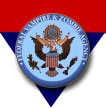After all the recruiting, training, investigating and planning was done, it was left to a few brave souls to go into dark places and exterminate vampires and zombies. No matter how effective their training at the Academy, very few new agents were prepared for their first encounter with the undead. Because of this, the FVZA developed a system in which new agents were slowly indoctrinated into combat. Agents fresh out of the Academy served two years as investigators, where they learned about vampire and zombie movements and habitats. Some agents stayed on as investigators while others, their appetites whetted, joined the advance team.
Advance Team
Advance teams conducted daytime reconnaissance missions in vampire and zombie hideouts. The advance team's primary objective was to identify hideouts and obtain estimates of undead numbers. This information was then passed on to the assault team. Advance teams carried a minimal complement of equipment in order to increase stealth and mobility. They were instructed not to engage the enemy unless absolutely necessary. If vampires awakened and spotted them, the advance team's directive was to retreat and leave extermination to the assault team. Despite these precautions, many advance team members lost their lives doing reconnaissance in the dark and dangerous spaces preferred by vampires and zombies.
In cities, advance teams usually found vampires and zombies in abandoned buildings, underground sewer systems and subway tunnels. In the country, caves, abandoned mines and old barns were the most popular hideouts.
Despite their importance, advance teams were a luxury many communities could not afford; in these areas, advance reconnaissance and extermination were conducted by the same agents.
Assault
FVZA agents who showed promise on the advance team would eventually be promoted to the paramilitary assault team. When it came to killing vampires and zombies, assault teams did the bulk of the work. Assaults on vampires were almost always conducted in the daytime, in stages. The general strategy was to drive the vampires into a confined area where they could be eliminated by gunmen using explosive bullets. In smaller spaces, like the basement of an abandoned building, tear gas was used to flush vampires. For larger areas like subway tunnels, flamethrower-wielding agents (firemen) tried to drive vampires toward the gunmen.
While vampire packs tended to avoid confrontation, zombies exhibited a fearless aggression that, ironically, made the assault team's job easier. The team would conduct a frontal assault and overwhelm the zombies with superior numbers. The chief danger for the assault team was stumbling into a larger zombie pack than had been anticipated. For this reason, the advance team's estimates of zombic numbers were crucial to the mission's success.
Assault team members who displayed conspicuous excellence along with an independent streak were offered a spot in the most elite troop of FVZA fighters: the Shadows.
Shadows
Night missions were highly dangerous and required a great degree of stealth. Only the most skilled and experienced agents, known as "Shadows," took part in these missions. With a premium on stealth and agility, Shadows wore black jumpsuits and carried minimal equipment. They moved without sound, whether stalking a hunting pack or slipping into a vampires' den, and were experts in various martial arts disciplines.
However, the relentless pressure, along with the strange hours, took its toll on the personal lives of Shadows, as they had the highest rates of alcoholism and suicide in the FVZA.
Return to FVZA Hub
© 2001-2014 Dango Productions, Inc.






